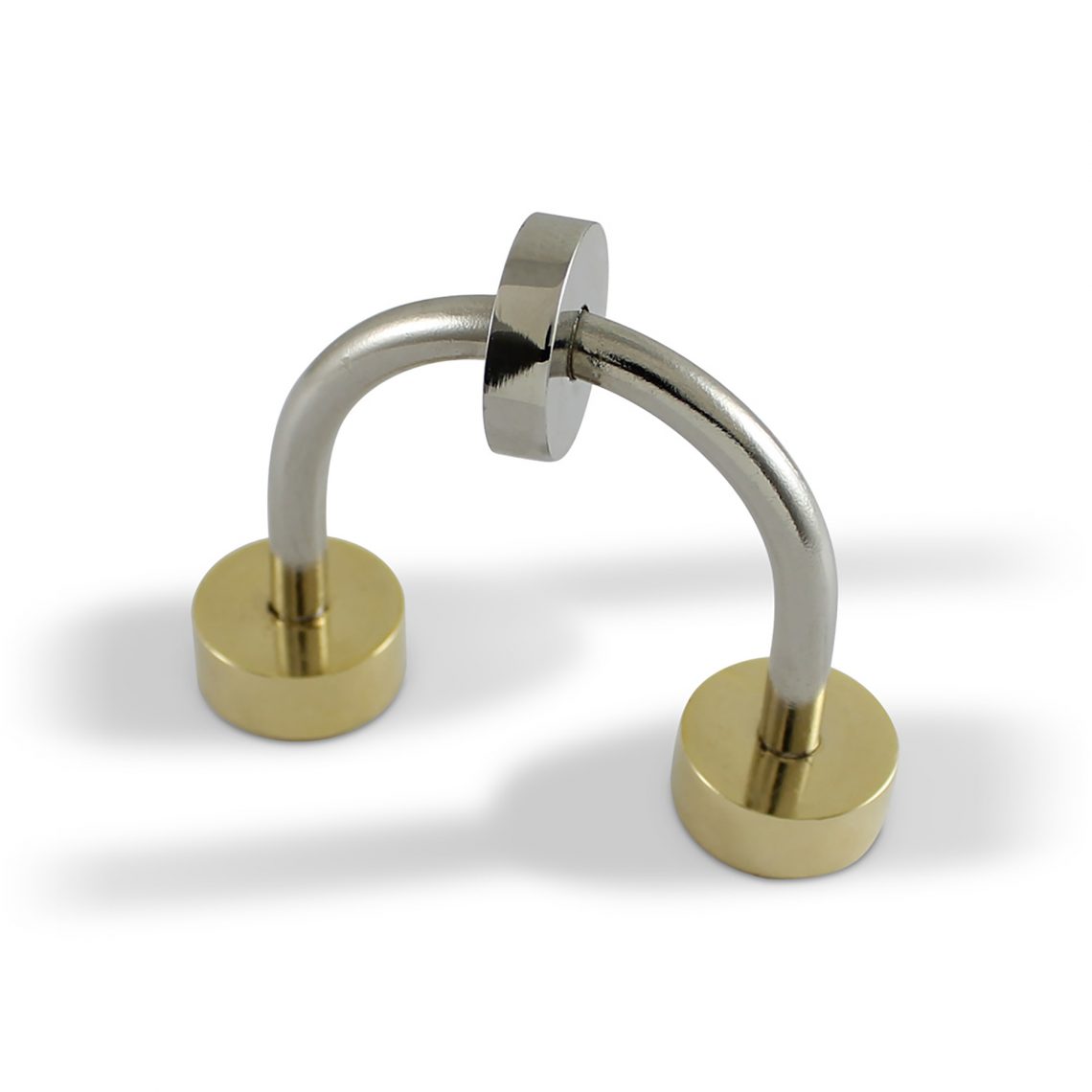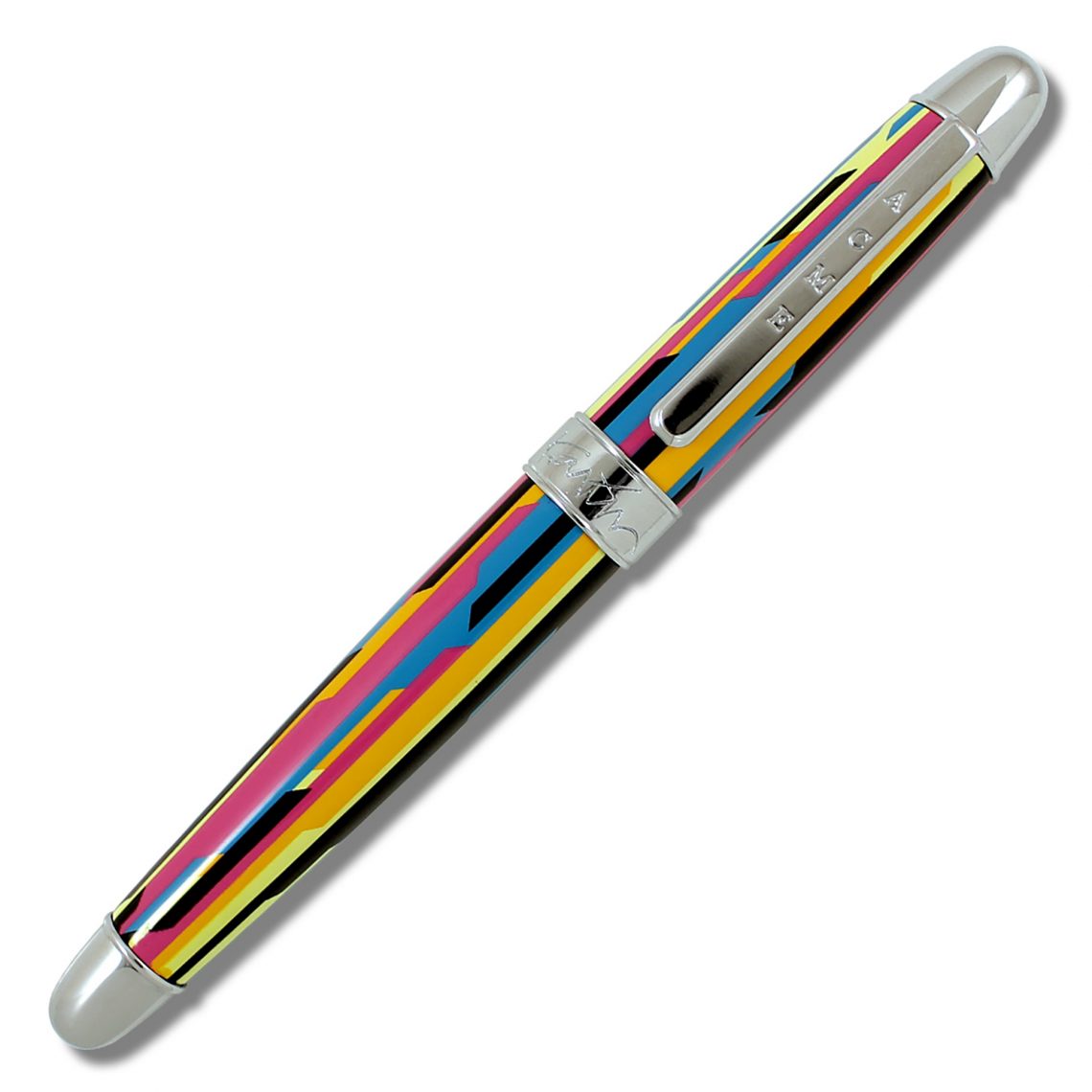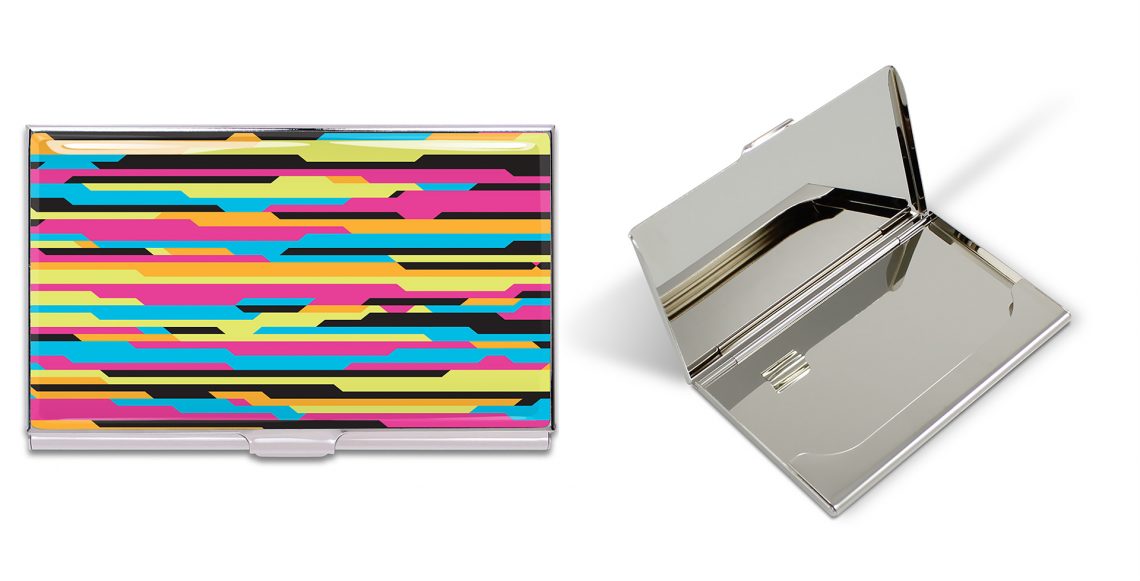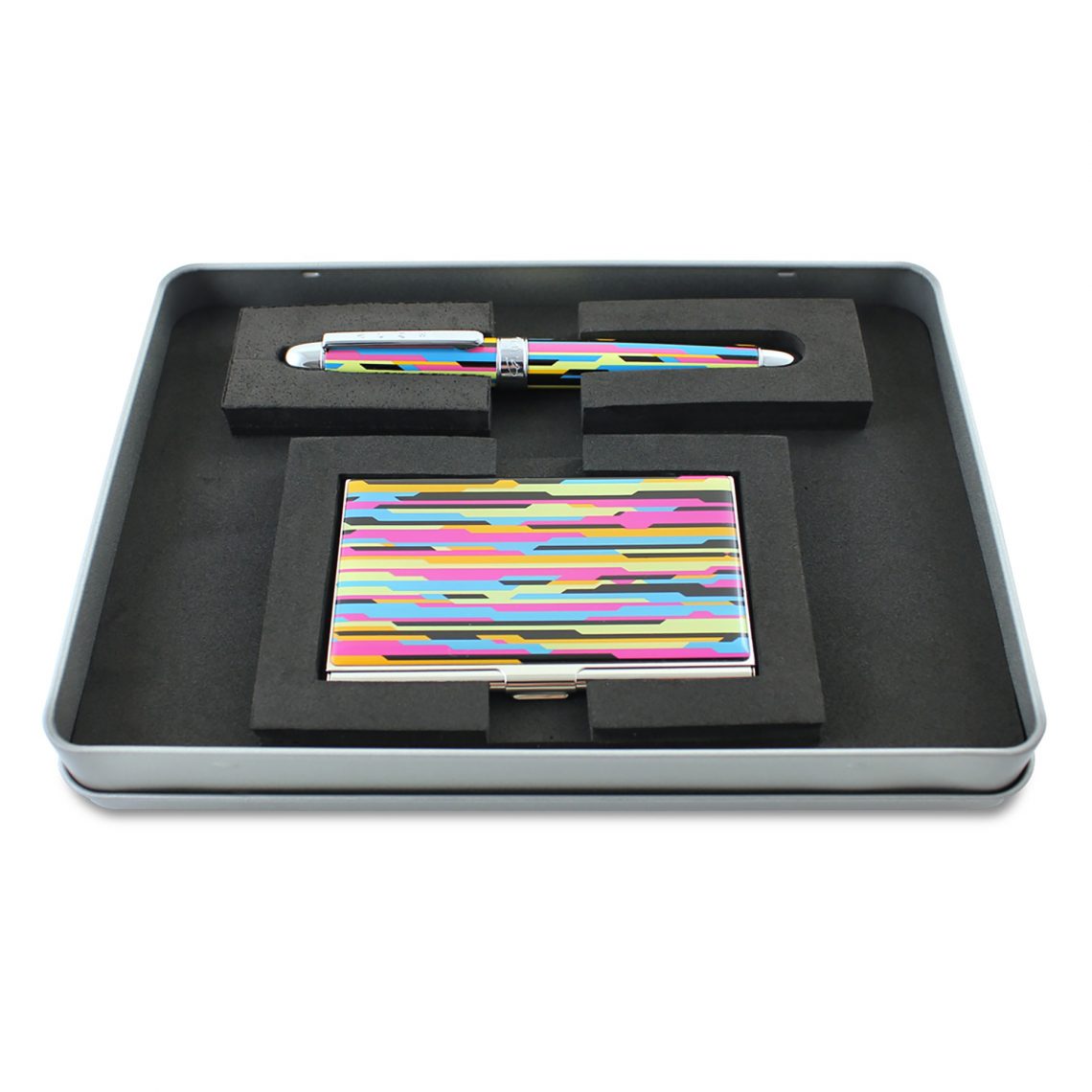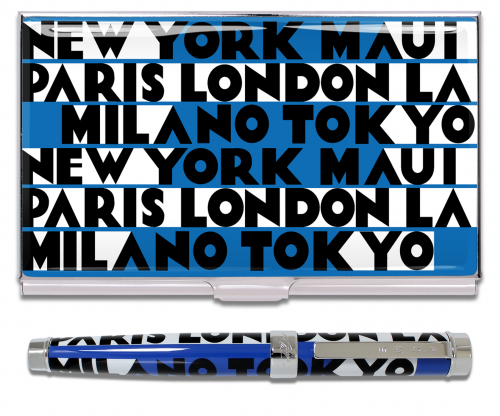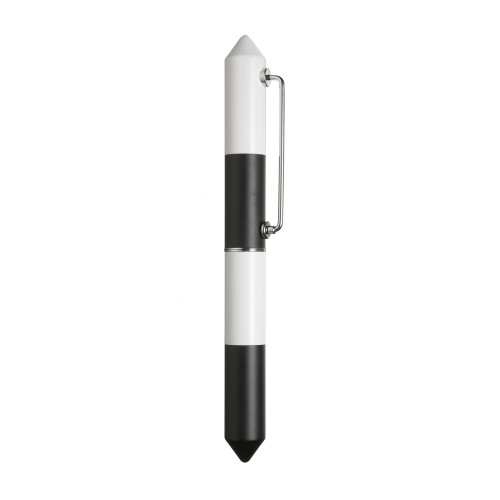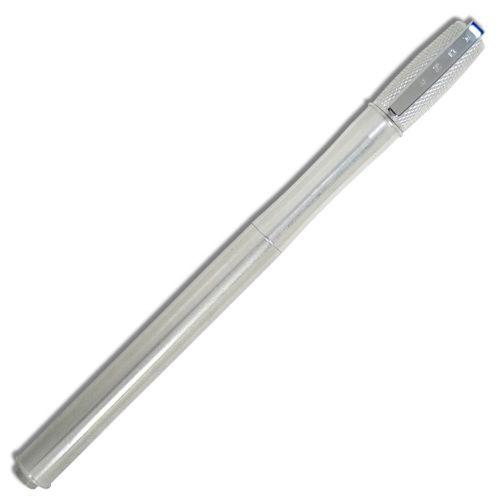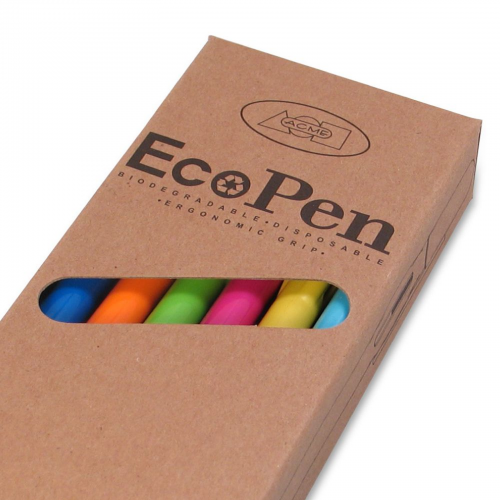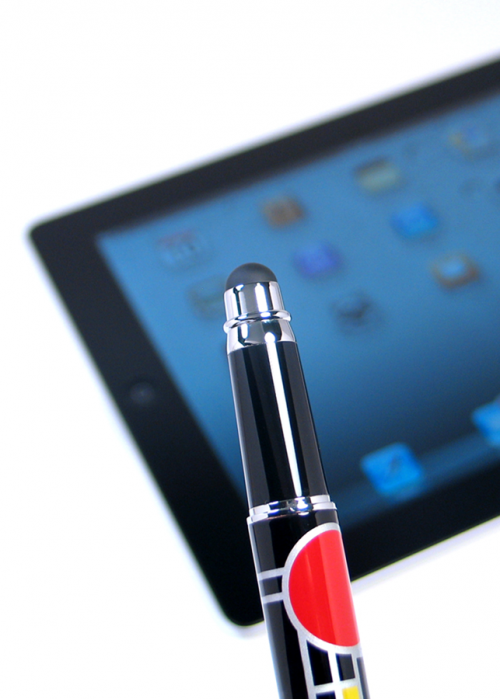 left> “capacitive” tipped pen for the ipad, notepad or iphone
left> “capacitive” tipped pen for the ipad, notepad or iphone
[DesignApplause] We’re talking to Adrian Olabuenaga and Lesley Bailey, who founded ACME Studio. The company makes products and accessories designed by the world’s foremost architects, designers, and artists. Acme has been nominated for multiple design awards including the Cooper-Hewitt National Design Award. It’s an honor to talk to you guys.

scale | shigeru ban
I was born and raised in New Zealand. At an early age I was exposed to modern design by parent’s friends that lived in a very new house built in the mid 50s, with all the latest furniture accessories. My father, who was an avid artist, was by day a linesman technician and he taught me about the world by painting a picture. For example, if I was listening to the radio and asked “What’s a brass band?” he would paint me a picture of what a brass band looked like. In this environment I grew up reading about Picasso, Monet, etc., which filled me with a wonderment about art. I also grew up with a best friend who lived in a Frank Lloyd Wright inspired house which I never knew until we had moved to Maui. Imagine my surprise. So I was surrounded with art, design, and architecture.
[DA] Adrian, that’s a tough act to follow!
[Adrian Olabuenaga] I won’t try to top it. I was born in Argentina. My father was an architect so I was always around and exposed to design of that time, of that period. I started to make jewelry when I was very young (16 years old) and everything just neatly merged together becoming architectural jewelry. I became aware of the Memphis Group in the 80s and began to collaborate with one of the American members of the Memphis Group, Los Angles based designer Peter Shire. We started to work together on a jewelry project and he also introduced us to Ettore Sottsass who in turn introduced us to all the Memphis designers. That’s how it all started.
[DA] Were you and Lesley both working together at the time?
[AO] Just as I had put this thing together Lesley moved to the US and after making a series of pieces the company was founded in 1985.
[LB] How I learnt about Memphis was Adrian calling me up when I was living in Sydney, Australia. Adrian had just seen the Memphis show at Janus Gallery in LA. He told me to find the hippest furniture store, which I did, and they just happened to have the right book on the subject. So I sat down and read this book by Barbara Radice who ended up being one of our closest friends. Soon thereafter I moved to Los Angeles where as Adrian says, it all began there.
[DA] Memphis, such a fun and expressive genre. Do you feel that Memphis just sort of petered out?
[AO] I don’t think it petered out. It had the influence it was meant to have and it changed the design landscape and opened up so many doors and new possibilities for young designers. The designers entering the field now, few are aware of the history and the doors that were opened for them by Memphis. Interestingly, at this time there was nothing going on in design but after Memphis, there were never as many designers as there are now.
[DA] I believe that 95% of “good design” is genre-based. All clever adaptations and mixings of classic movements. These classics are terribly important for many reasons. Wouldn’t you agree?
[LB] Most definitely. Bauhaus for example is the root of so much. For instance our logo shapes are from the Bauhaus. After Adrian saw the Memphis show, he realized that out of every great movement there was always a jewelry collection associated with it, such as Art Deco, and Art Nouveau, so why not do a Memphis Collection? Knowing that Peter Shire, the only West Coast Memphis designer, lived in LA Adrian contacted him. At this time Adrian was producing enamel, cloisonné, and Memphis with its bright colors was a perfect match for the technique. We took cloisonné, a thousand-year-old process, and brought it into the 80s. It was taking something that was small and delicate and making it really wow.
[DA] Repurposing to the nth.
[AO] Exactly. Applying old rules to what’s happening now.
[LB] One of our goals was to design a biodegradable pen, which Adrian did in 2009. So you can use it and throw it away and it degrades, so we are not impacting landfills. We have been reusing or repurposing from the beginning of our business one of our first biggest investments was a shredding machine, which we use for all our interior packaging of our shipments. As Adrian says, “we were green before green was green.”
[DA] During the Memphis period in the mid-80s there were many things happening. Sadly, Steve Jobs died yesterday, and he was responsible for a big change in the 80s with the Mac computer. It changed the game, had a tremendous influence on designers, allowed them to do these “playful” things with typography and layout. I remember when April Greiman and Kathy McCoy hit the design community by storm with Postmodern and New Wave.
[LB] April Greiman. She created a brooch for us designed entirely on the MacIntosh and we used that art to create the brooch in cloisonné.
[AO] April was one of the first designers to see the Mac being applied to graphic design. Before we get into a new subject, there was something left unsaid about Memphis: it was created out of necessity as there was nothing going on in design. It wasn’t plotted out in a manner to change the world. It wasn’t meant to be a movement, it just happened because it was needed. In this country everything seems to have to have a title, an “ism”. Even big institutions incorrectly classify Memphis into Postmodern. When we had a Memphis as a movement discussion with Ettore, he explained that Memphis had nothing to do with Postmodern. The only connection they had to Postmodernism was including Mr. Graves in the group. It was about exploration, creating new possibilities.
[LB] I am sure people are not aware of how Memphis was part of their everyday life back then. It influenced all graphic design from TV credits to greeting cards. Memphis is Acme’s roots so it is always part of who we are.
[AO] And nobody really understood where it came from. The majority of the consumers had no clue. To most it was just a group of Italians and a group of people from around the world producing a distinctive style. And yet the influence it had is still felt today.
[DA] What you may know and what I find interesting, is the Memphis style, the Postmodern style, is the most uncomfortable, most unnatural style for a student or young designer to execute. They tend to be so careful and don’t get that you’ve got to be in a very playful experimentation mood. The geometric shapes and primary colors, bright colors, is basic visual imagery. They have a hard time letting go and having this is really fun visual dialog.
[AO] That’s right. Every color, every shape, every position, there’s no limit really. And that’s more difficult than a design project with stricter design parameters.
[LB] And I think another reason why this is so today is the creative structure is different. There’s no time to play. The Memphis guys sat around all afternoon in a room drinking wine and eating pasta, hanging out, and having fun. The end result brings a smile to your face. It is all about having fun.
[DA] Are you familiar with the designer Jane Dillon?
[AO] No, I don’t believe so.
[DA] You’ll have to go on DesignApplause or search the DesignMuseum site. I found her by accident. We have a photo of a chair with the question “do you know who did this and when?” And if you said Peter Shire and mid-80s you’d be wrong. This designer did her chair in the late 60s. She worked with Ettorre in Italy. She was doing this stuff and influencing Sottsass and his colleagues.
[AO] Remarkable. It just proves that everyone is influenced by something, someone. You’d have to be sequestered on a mountaintop where you met no one, be untouched by the outside world to avoid an outside influence. That’s why studying design, design history is important. You grow larger when an accomplished someone guides you around until you develop your own style or whatever. Someone has to push that first button.
[DA] You look for mentors, you look for inspiration. And while you are doing that you are also searching for your own voice. Here’s a question. You work with such talented and renowned designers and artists, what’s the process, who contacts who?
[AO] Obviously at the beginning we were doing all the approaching. But over time it’s now about 50-50. Three or four years ago we stopped inviting people because we had so many backlogged designs waiting to be released that we needed to catch up. And as soon as we stopped inviting people we started getting bombarded by designers wanting to design for us. A lot of really good stuff. But today we are also working with designers that are not well known yet or people far removed from the design world. We love jazz and recently began a project with some of our favorite musicians like John McLaughlin, Chick Corea, and Lenny White (all of whom recorded with Miles Davis) and bassist Stanley Clarke are people who have profoundly influenced music as certain designers have influenced design. And the relationships and friendships that have come out of this collaboration are quite unbelievable to us.
[DA] Yes, I’m looking at your list. You have Blue Man Group for example, my goodness. I see you have Stanley Tigerman, a local Chicago architect, who by the way has done a very nice china in a Deco Memphis black and white motif. How did that happen?
{AO] That was done during the period when we were approaching designers and we wanted to start an architect’s collection. We started with Philip Johnson asking him to design part of the collection, but he did not do decorative arts, so he instead proposed to curate the collection and helped with a list of architects that we should invite. When it was done, Philip also helped choose the designs that went into production.
[DA] What you’re doing is dealing with established, visible people and plunking them on objects. What have you learned, how important is a signature style on the object?
[AO] It is and it isn’t important. We have big names with big styles and we have unknowns who have produced great work for us. We just talked to a young designer at a trade show and she asked us if you have to be famous to work for Acme. Our answer was, “no, you just have to be good”. And she submitted some things that went into production and it’s doing great.
[LB] When we started and we created jewelry and the premise was to create art that people could wear. We always want to do things that are a little different. When we did bolo ties back in the 80s, we didn’t do a bolo tie or a lariat like everyone else. We did something very different using a rubber cord. Then somebody copied it and we quit doing bolo ties. Here you go. We did earrings that didn’t match. So you had a mis-match, using different shapes or colors.
[DA] You know what, I do not own one bolo tie. I grew up with skinny pants and pointed shoes.
[AO] And thin little ties and skinny belts.
[DA] Exactly. The nature of your business is you really don’t know what product is going to be successful, do you?
[AO] No way of knowing.
[LB] We don’t have a crystal ball.
[AO] We had one and it broke.
[DA] Two Chicago designers Jim Lienhart and Herbert Murrie created a successful greeting card line California Dreamers, and many of us were asked to submit concepts. There would be twenty concepts and bets were made which ones would be winners. Most were hopelessly wrong.
[AO] The last thing you want to do with anything creative is have a focus group to make decisions. If you need opinions, you’re just looking for security in your decision making. Trust your instincts and if you don’t learn more until you do. One person’s opinion is just as likely to be right as a group decision. But a group decision is rarely a clear vision of the original intent. If you are the designer and you were wrong, sometimes you have to fall on your sword and hopefully learn from it.
[DA] Funny you say that. A week ago at the Cusp Conference here in Chicago a guest speaker, Laura Guido-Clark, said the focus group was the new “F’ word in design.
[LB] Very funny. You need to have passion and believe in what you do. Though some things may fail you have to believe in it whole heartedly. A perfect example: When we moved to Maui we did a collection of chairs designed for us by Peter Shire. These were made of non endangered exotic wood from trees that were cut down that were growing into plumbing or creating problems for people’s foundations. We took them to ICFF to sell but though everyone appreciated their beautiful design and craftsmanship, we were too early for reusing or repurposing wood. These chairs we still have today. They are one of a kind, and are about 10,000 bucks each and still look beautiful. You have to keep your passion alive and believe in what you are doing, even when things do not work out.
[AO] You have to know and accept that when you’re working with good talent you have to trust what they create without any question.
[DA] Ah, you are the perfect clients.
[LB] We had Ettore design our house and he allowed a tremendous amount of input from us but we did let him do his thing, for sure.
[DA] We would love to see imagery of his architectural efforts.
[AO] Ok, we can do that.
[DA] Going after famous people, are you ever denied working with them?
[LB] Yes, but I’m not good at taking no for an answer.
[AO] I think the last one to say no to us was the Richard Avedon estate. We wanted to use Mr. Avedon’s iconic psychedelic Beatles photos because we are doing this project with the Beatles.
[DA] Let’s talk about the Beatles project. I read your release, almost three pages long just describing what and how you plan on creating and releasing this vast collection. [ note: The Beatles Collection Prelude ]
[AO] How it came to us was as simple as an email. We get an email that says we represent the Beatles and we would like to do a project with you.! Are you interested? That was it.
[LB] It took about 1/10th of a second to make that decision.
[AO] Maybe of interest, we have been talking a lot about design up till now. But this collection is less design and more about pop culture. It’s like crossing over to the dark side for some but we find we have no problem with merging deign with pop culture. If it’s done right, pop culture becomes design too and vice versa. When we started thinking about designing the Beatles project we came to the realization that this project was going to be a huge responsibility. All of a sudden you realize that you have the Beatles in your hands and what do you do? It meant we had to do something different than what we normally do.
[DA] When did you announce the collection?
[AO] We announced it this past January. We didn’t even have a sample when we made the announcement, just computer generated images on paper. And people were lining up saying ‘I want, I want’. And since it’s all limited edition, we were almost completely sold out of the first run before we even had a sample in our own hands.
[DA] How much lead time was required from when you started the project and when you announced last January?
[AO] It took two months to create a strategy and some of the product concepts. And we began shipping the first part of the project this past August.
[DA] Where does your creative come from? In-house? What’s your work environment like?
[AO] It’s kind of a funny thing. During the day, I’m business. When I go home at night I become designer. So for this project I sketched at night and had our staff develop it the next day in the office. The Beatles took a couple of weeks in this mode before we settled in on the best possible strategy.
[DA] The creative’s brain never turns off does it.
[LB] People ask us what are we going to do when we retire. Designer’s don’t retire, they just die. Eva Ziesel who is our oldest living designer is still designing and she will be 105 this year.
[AO] It’s not a rare thing when architect’s do their best work in their 70s or 80s. That’s a well known fact.
[DA] Are you continuing to look for new things to make?
[AO] We’re always looking for new things to make. I was recently asked when the economy gets bad like it is now, if we stick to the status quo or do we continue to innovate. Our answer is that I don’t think we know how to keep the status quo. We don’t know how to not keep moving forward.
[DA] How old is your leather category and how is that category performing?
[AO] We started it about three or four years. It does very well on its own, but once you get into a category like the pens with a great deal of volume you kind of get spoiled.
[LB] And when you talk about our pens today, the writing instruments, we can talk about repurposing. For example, we’ve taken our standard roller ball pen that you can convert with our fountain pen converter into a fountain pen and now you can also convert it using our brand new “capacitive” tip front section that can then be used on an iPad, Notepad, an iPhone or any smart phone.
[DA] Are you going to do iPhone and iPad cases?
[LB] No, other people are already doing that.
[AO] And you’re talking about creating a category that is dependent on what someone else is making. Especially one who is notorious for upgrading and changing. That would be a mistake. Once a product is discontinued you now have a warehouse full of things you can’t sell.
[DA] You have a preponderance of locations in the Far East. Why is that?
[AO] That wasn’t the plan, it just happened that way. It was the exposure, being in the right place at the right time and keeping options open. But because of our Asian presence, we were approached by a company in the United Arab Emirates and in the past few months we opened up distribution there. They came over here to meet with us. In that part of the world they need to really see you, meet you, look into your eyes, which is an unbelievably productive custom. They spent a 24-hour day traveling to meet with us for three hours. We were beyond flattered and they are wonderful to people and great to work with. We’re now designing two Acme Shop-in-Shops to open in Dubai.

casa maui | ettore sottsass
[LB] To get back to why we are in Asia, to begin with, we’ve been in Japan since 1987. And they took the Memphis collection very seriously, but then they take design very seriously. And I remember when we were discussing our house with Ettore he said if we built it LUCK would follow. We never even thought about his comment again until we were being interviewed in 2007 at the opening of our flagship store in Tokyo. That’s when we realized luck did follow, here we were 20 years later opening our first flagship store and 10 years after moving into our house that Ettore designed for us.
[DA] Thank you for your time that was a fun hour!
[LB & AO] Thank you, we had a fun too!!
[ acme studio ] [ ettore sottsass ] [ memphis group ] [ jane dillon ] [ laura guido-clark ]




